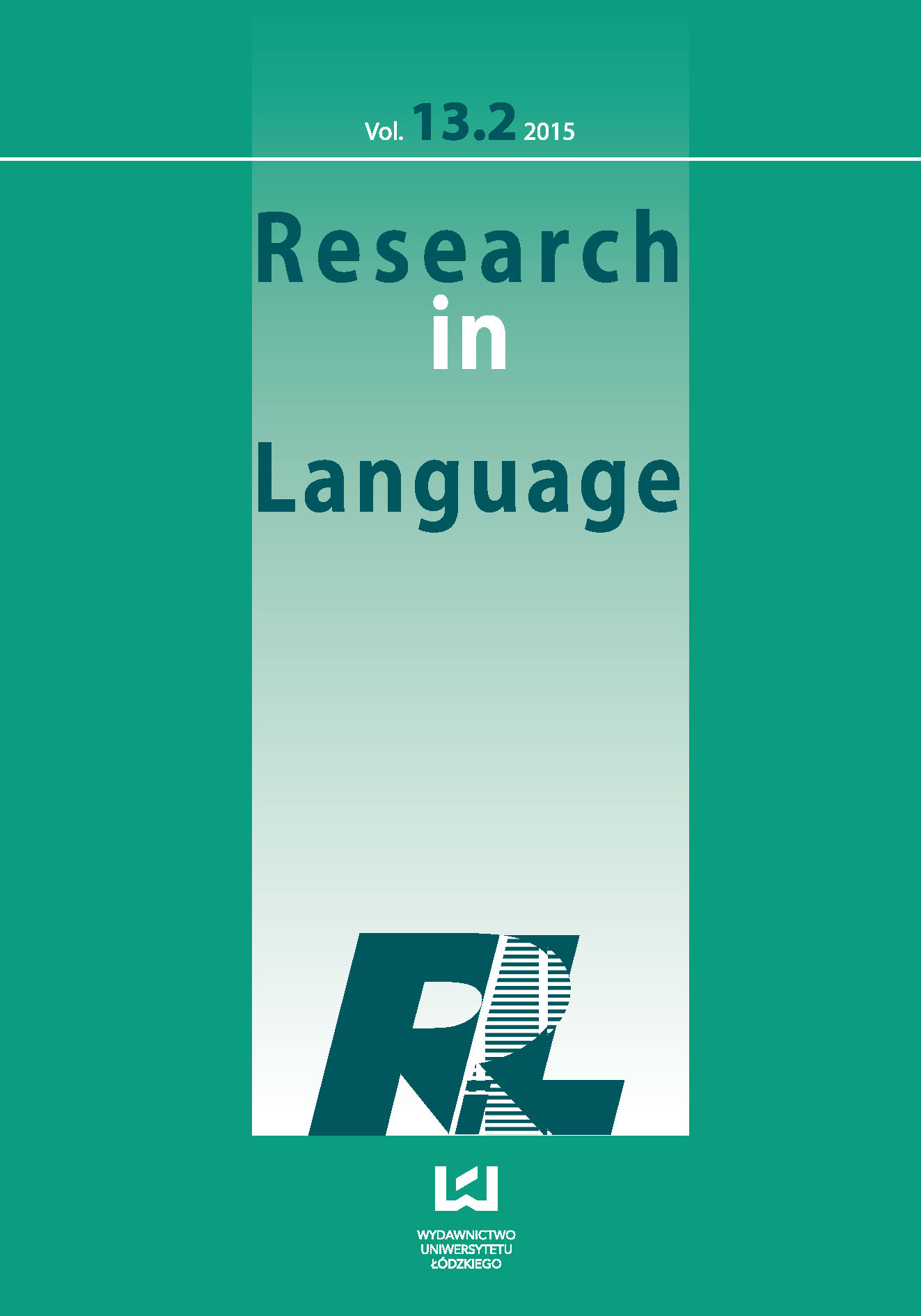The Relationship Between English and Polish Rhythm Measures in Polish Learners of English
DOI:
https://doi.org/10.1515/rela-2015-0020Keywords:
L1 and L2 speech rhythm, rhythm measures, vowel reductionAbstract
This paper investigates native and non-native speech rhythm in the speech of Polish learners of English at an intermediate/upper-intermediate level. More specifically, it attempts to explore the relationship between rhythm measures scores in L1 Polish and L2 English within individual speakers. Phonological vowel reduction in terms of duration is present in English and crucial for the perception and acoustic measurements of linguistic rhythm. Polish, on the other hand, has no phonological reduction of that kind. The acquisition of L2 vowel reduction is highly determined by the level of language proficiency and influences non-native rhythmic patterns. The study tests six speech rhythm measures: %V, DV, DC, VarcoV, VarcoC and nPVI-V in two tempos: normal and fast. The results show that most of these measures are positively and significantly correlated with each other between L1 Polish and L2 English across the subjects and for two tempos, although to a different degree. Highly significantly correlation has been noted for %V and ΔC in fast tempo. Moderate significant correlations between the two languages are observed for ΔV, ΔC (normal tempo), VarcoV and nPVI in fast tempo.
References
Abercrombie, D. (1967). Elements of general phonetics. Edinburgh: Edinburgh University Press.
Google Scholar
Boersma, P., & Weenink, D. (2008). Praat: Doing phonetics by computer (version 5.0.29). Retrieved 14th July 2008, from <http://www.praat.org/>.
Google Scholar
Dauer, R. M. (1987). Phonetic and phonological components of language rhythm. Proceedings of the 11th International Congress of Phonetic Sciences, August 1-7, Tallin, Estonia. vol. 5, 447-450.
Google Scholar
Dauer, R. M. (1983). Stress-timing and syllable-timing reanalysed. Journal of Phonetics 11, 51-69.
Google Scholar
Dellwo, V., & Wagner, P. (2003). Relations between language rhythm and speech rate. Proceedings of the International Congress of Phonetic Science, Barcelona, 471-474.
Google Scholar
Grabe, E., & Low, E. L. (2002). Durational variability in speech and the rhythm class hypothesis. In C. Gussenhoven & N. Warner (Eds.), Papers in Laboratory Phonology 7 (pp. 515-546). Berlin: Mouton de Gruyter.
Google Scholar
Laver, J. (1994). Principles of phonetics. Cambridge: Cambridge University Press.
Google Scholar
Lehiste, I. (1977). Isochrony reconsidered. Journal of Phonetics 5, 253-63.
Google Scholar
Nespor, M. (1990). On the rhythm parameter in phonology. In I. Roca (Eds.), Logical Issues in Language Acquisition (pp. 157-175). Foris. Dordrecht.
Google Scholar
Ramus, F., Nespor, M., & Mehler, J. (1999). Correlates of linguistic rhythm in the speech signal. Cognition, vol. 73, Issue 3, 265-292.
Google Scholar
Roach, P. (1982). On the distinction between ‘stress-timed’ and ‘syllable-timed’ languages. In D. Crystal (Eds.), Linguistic Controversies (pp. 73-79). London: Arnold.
Google Scholar
Waniek-Klimczak, E. (2005). Temporal Parameters in Second Language Speech: An Applied Linguistic Phonetics Approach. Łódź: Wydawnictwo Uniwersytetu Łódzkiego.
Google Scholar
White, L., & Mattys, S. (2007). Calibrating rhythm: First language and second language studies. Journal of Phonetics 35, 501-522.
Google Scholar










